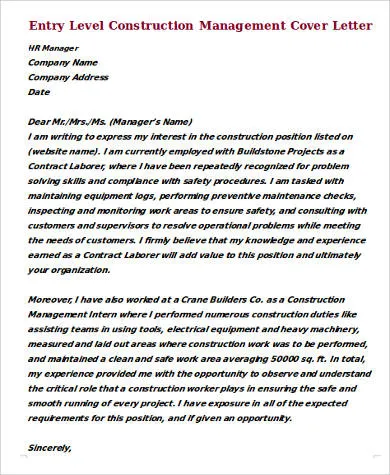Why a Strong Entry Level Cover Letter Matters
In the competitive field of construction management, especially at the entry level, a compelling cover letter can be your key to unlocking opportunities. It serves as your first impression, a chance to showcase your personality, enthusiasm, and potential beyond the confines of your resume. A well-crafted cover letter highlights your relevant skills, experiences, and aspirations, making you stand out from other applicants and demonstrating your genuine interest in the specific role and company. It’s your opportunity to tell a story, to connect with the hiring manager, and to convince them that you are the right fit for their team. The cover letter complements your resume, providing context and a deeper understanding of your qualifications, which is especially important when you are just starting out in your career.
Highlighting Relevant Skills
Even if you’re at the entry level, you likely possess skills that are valuable in construction management. Identifying and emphasizing these skills is crucial. These could include project management fundamentals, communication and teamwork abilities, technical proficiency in relevant software or tools, and problem-solving skills. Tailor your skills to align with the job description. For example, if the job requires knowledge of scheduling software, explicitly mention any experience or training you have with that specific software. This shows the hiring manager that you’ve done your homework and are prepared to contribute effectively from day one.
Project Management Fundamentals
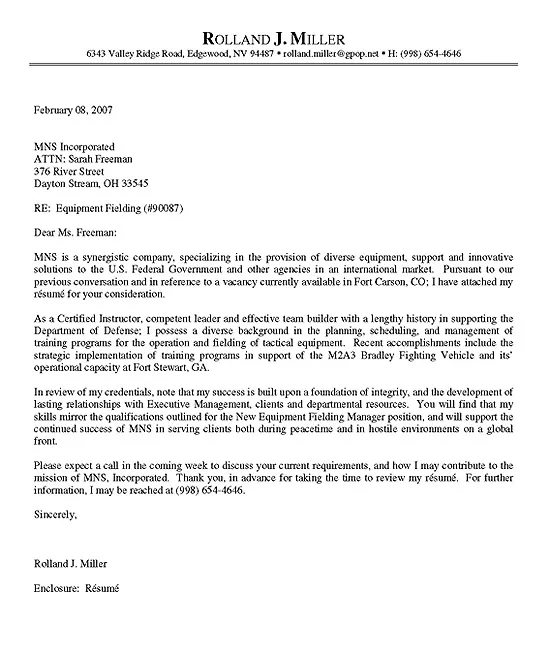
Entry-level candidates should highlight their understanding of fundamental project management principles. This includes knowledge of project planning, scheduling, budgeting, and risk management. Even if you don’t have extensive on-site experience, you can demonstrate your understanding through coursework, internships, or volunteer work where you’ve applied these principles. Using specific examples to illustrate your understanding, such as, ‘In my internship, I assisted in creating a project schedule using [software/method], ensuring timely completion of tasks’ can significantly improve your cover letter.
Communication and Teamwork
Construction management heavily relies on effective communication and teamwork. Highlight any experience you have in these areas. This might include experiences in group projects, leadership roles in extracurricular activities, or any situations where you successfully coordinated with others to achieve a common goal. Examples like ‘Successfully coordinated a team of five students to complete a design project, effectively communicating deadlines and responsibilities’ showcase your ability to work collaboratively. Also, include your ability to communicate effectively with various stakeholders such as clients, contractors, and supervisors.
Technical Proficiency
Construction management often requires proficiency in specific software and tools. Mention any software or programs you know, such as AutoCAD, Revit, Microsoft Project, or other project management tools. If you’ve taken courses or have any certifications related to these tools, make sure to include them. Even basic knowledge can set you apart. For instance, you might write, ‘Proficient in AutoCAD, used for creating and interpreting architectural plans during my coursework,’ and, ‘Familiar with [specific software] for project scheduling and budgeting’.
Quantifying Accomplishments
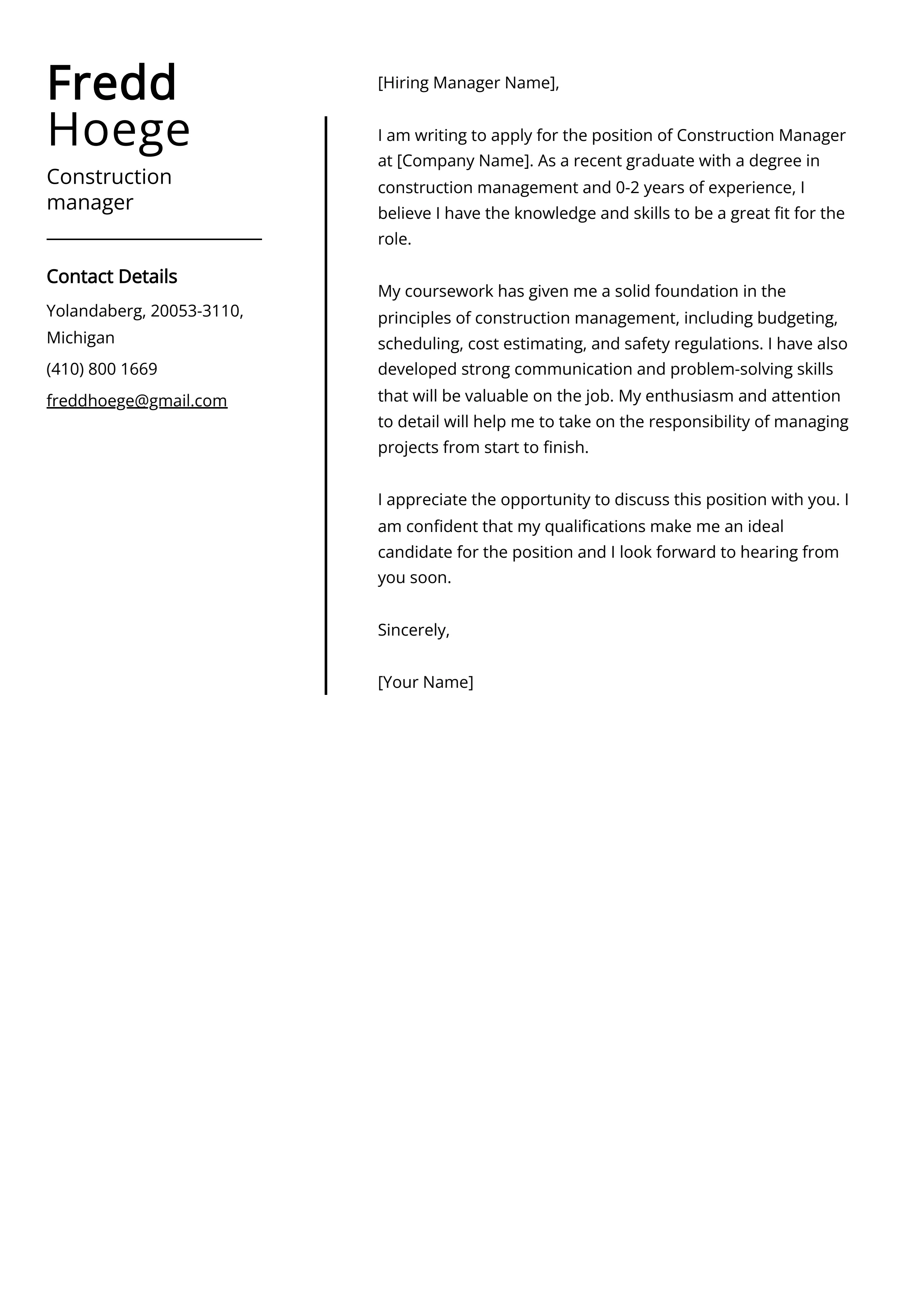
Whenever possible, quantify your accomplishments. Instead of simply saying ‘Managed projects,’ provide specific metrics. For example, ‘Assisted in managing projects totaling $500,000 in value during my internship, ensuring on-time and within-budget completion.’ This demonstrates the impact of your work and provides concrete evidence of your abilities. Use numbers, percentages, and specific results to make your accomplishments more impactful and memorable to the hiring manager.
Showcasing Education and Certifications
Your education is a significant asset, especially when you have limited work experience. Highlight your degree (e.g., Bachelor of Science in Construction Management), relevant coursework, and any academic achievements. Include any relevant certifications, such as OSHA 10 or LEED Green Associate, as these certifications demonstrate your commitment to safety and industry standards. Mentioning any projects or research that is related to the job will highlight your knowledge and dedication to the field.
Tailoring Your Cover Letter
One of the most effective ways to impress a hiring manager is to tailor your cover letter to the specific job and company. Generic cover letters are easily recognized and often disregarded. Take the time to carefully read the job description, identify the key requirements and keywords, and then use those keywords throughout your cover letter. Show that you understand the company’s values, projects, and industry position. This demonstrates your genuine interest and increases your chances of landing an interview.
Company Research
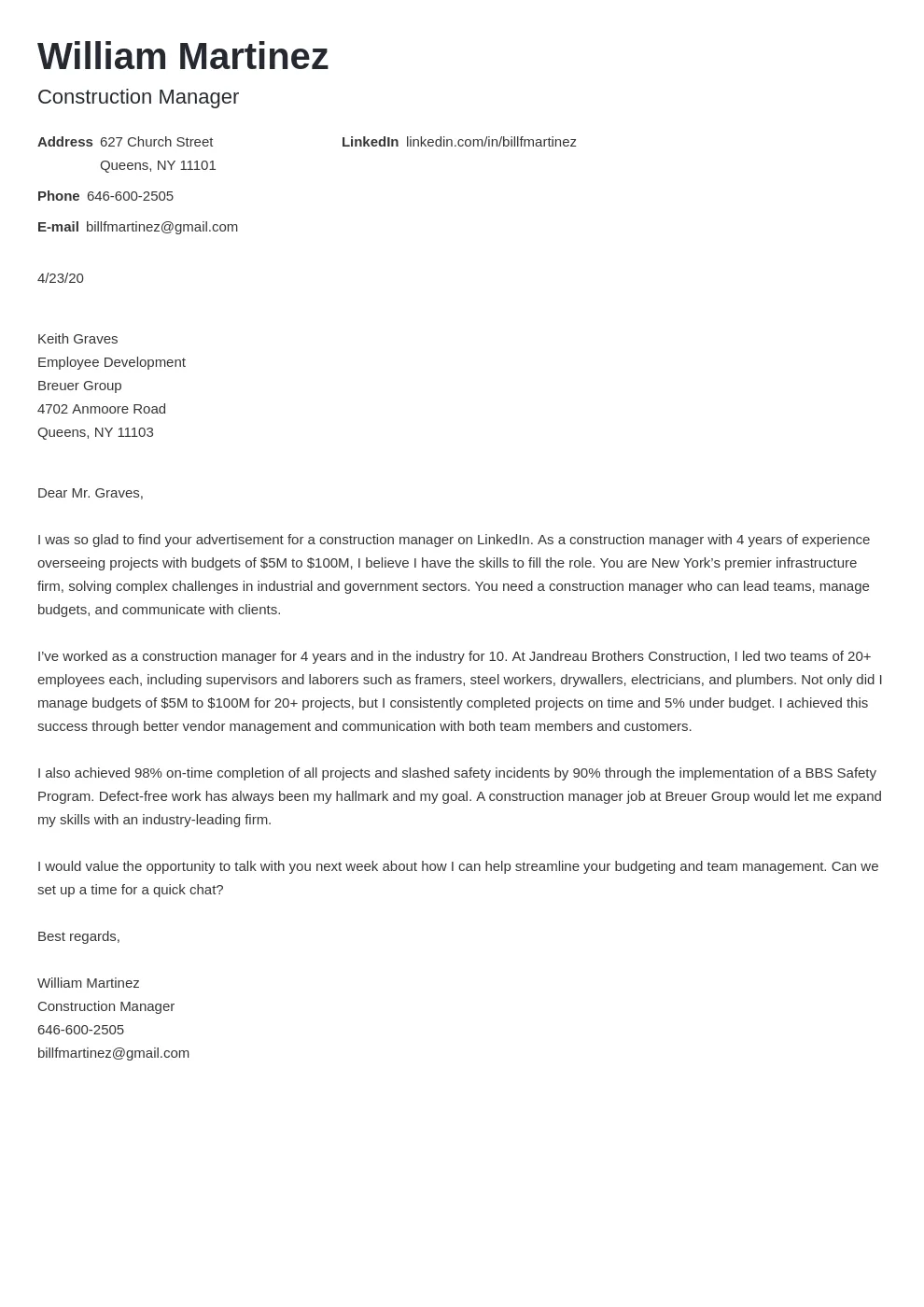
Before writing your cover letter, conduct thorough research on the company. Visit their website, read about their projects, and understand their mission and values. Identify what makes the company unique and how your skills and experiences align with their goals. Mentioning specific projects or initiatives that resonate with you will demonstrate your genuine interest. This will make your cover letter stand out from other applicants.
Addressing the Hiring Manager
If possible, address your cover letter to a specific person. Research the hiring manager’s name and title on LinkedIn or the company website. Addressing your letter by name shows that you’ve taken the time to make a personal connection. If you cannot find the name, use a professional greeting like ‘Dear Hiring Manager’ rather than a generic phrase such as ‘To Whom It May Concern.’
Formatting and Structure Tips
The format of your cover letter is just as important as its content. A well-formatted letter is easy to read and presents a professional image. Use a clean and readable font such as Arial or Times New Roman, with a font size between 10 and 12 points. Ensure that your letter is well-organized with clear sections and headings to guide the reader. Proofread the cover letter carefully to eliminate any typos or grammatical errors.
Cover Letter Template Breakdown
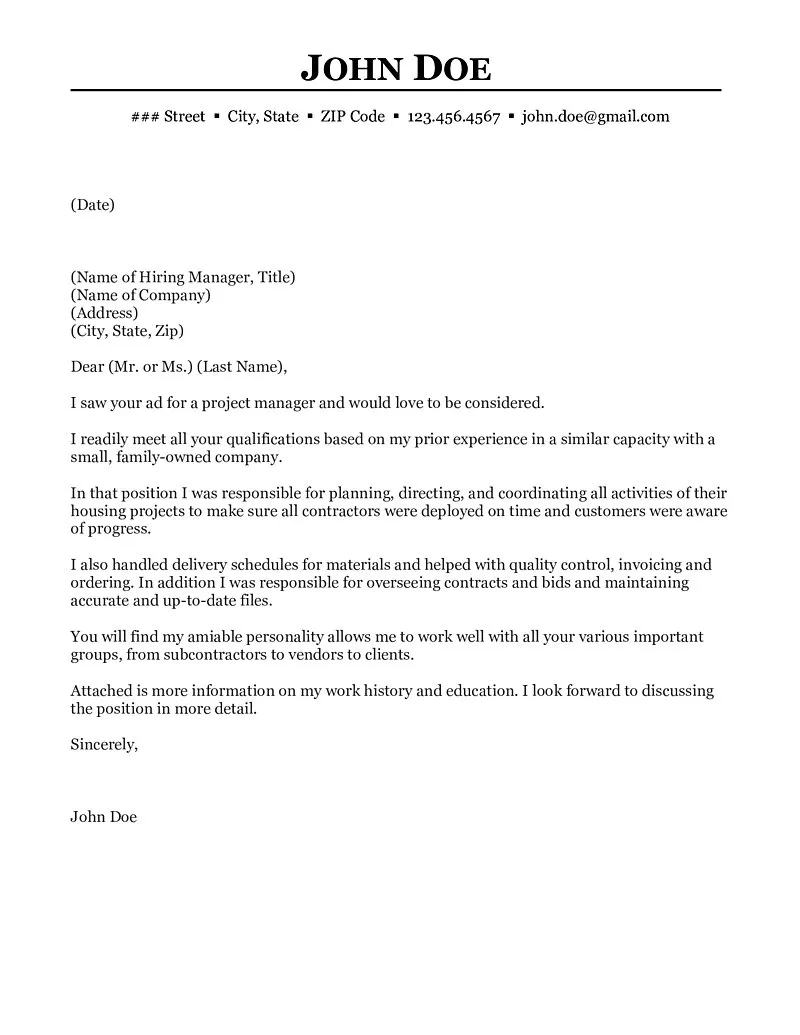
A standard cover letter usually consists of the following components: Header and Contact Information, Opening Paragraph, Body Paragraphs, and Call to Action and Closing. Each of these parts plays a crucial role in conveying your qualifications and interest in the position. Following a template ensures you include all the necessary information and present it in a structured, professional manner.
Header and Contact Information
Your header should include your full name, contact information (phone number, email address, and LinkedIn profile URL, if applicable), and the date. Include the company’s contact information, including the hiring manager’s name and title, if you have it. This information ensures that the recruiter can easily contact you for an interview.
Opening Paragraph
The opening paragraph should state the position you are applying for and how you found out about the opportunity. Briefly mention your interest in the company and why you are a good fit. It should be engaging and make the reader want to learn more about you. Keep it concise and focus on your enthusiasm for the role. For instance, ‘I am writing to express my keen interest in the Entry Level Construction Management position at [Company Name], as advertised on [Platform Name].’
Body Paragraphs
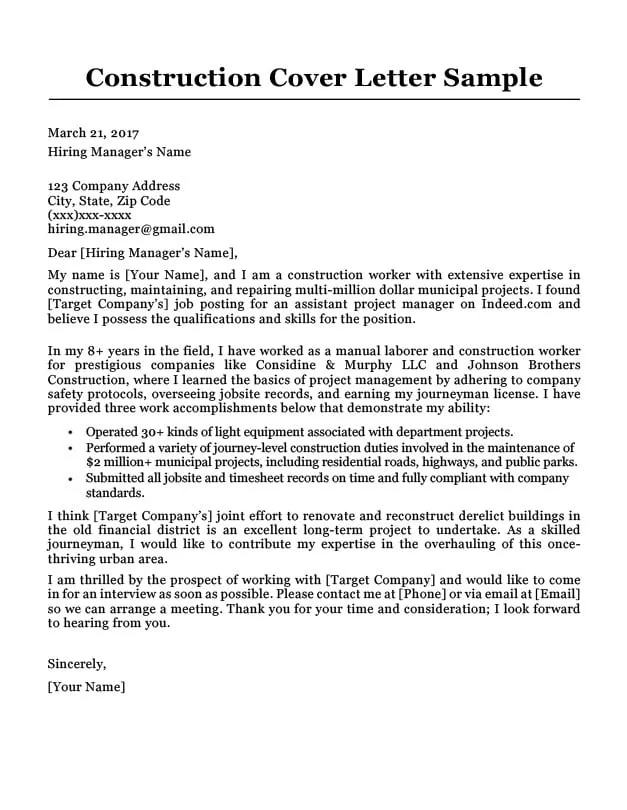
The body of your cover letter should be divided into two or three paragraphs. The first paragraph should emphasize the skills and experience that are most relevant to the job description. Use this section to provide specific examples of how you’ve used your skills and what you’ve achieved. The second paragraph should highlight your interest in the company, mentioning specific projects or values that resonate with you. Tailor this section to the specific role to ensure it reflects your passion and research. For entry-level positions, focus on transferable skills and explain how your experiences will help you succeed.
Call to Action and Closing
In your closing paragraph, reiterate your interest in the position and express your enthusiasm for an interview. Include a call to action by stating that you are looking forward to hearing from them soon and that you are available for an interview at their convenience. Use a professional closing, such as ‘Sincerely’ or ‘Best regards,’ followed by your full name. Ensure the closing is polished and leaves a positive impression.
Review and Proofread
Before submitting your cover letter, review it multiple times for clarity, accuracy, and professionalism. Ensure that the language is clear, concise, and free of grammatical errors and typos. Have a trusted friend or mentor review your cover letter. This helps ensure that it is error-free and makes a strong impression on the hiring manager. Reviewing your cover letter helps prevent potential errors from negatively impacting your application and improves the chance of getting an interview.
Common Mistakes to Avoid
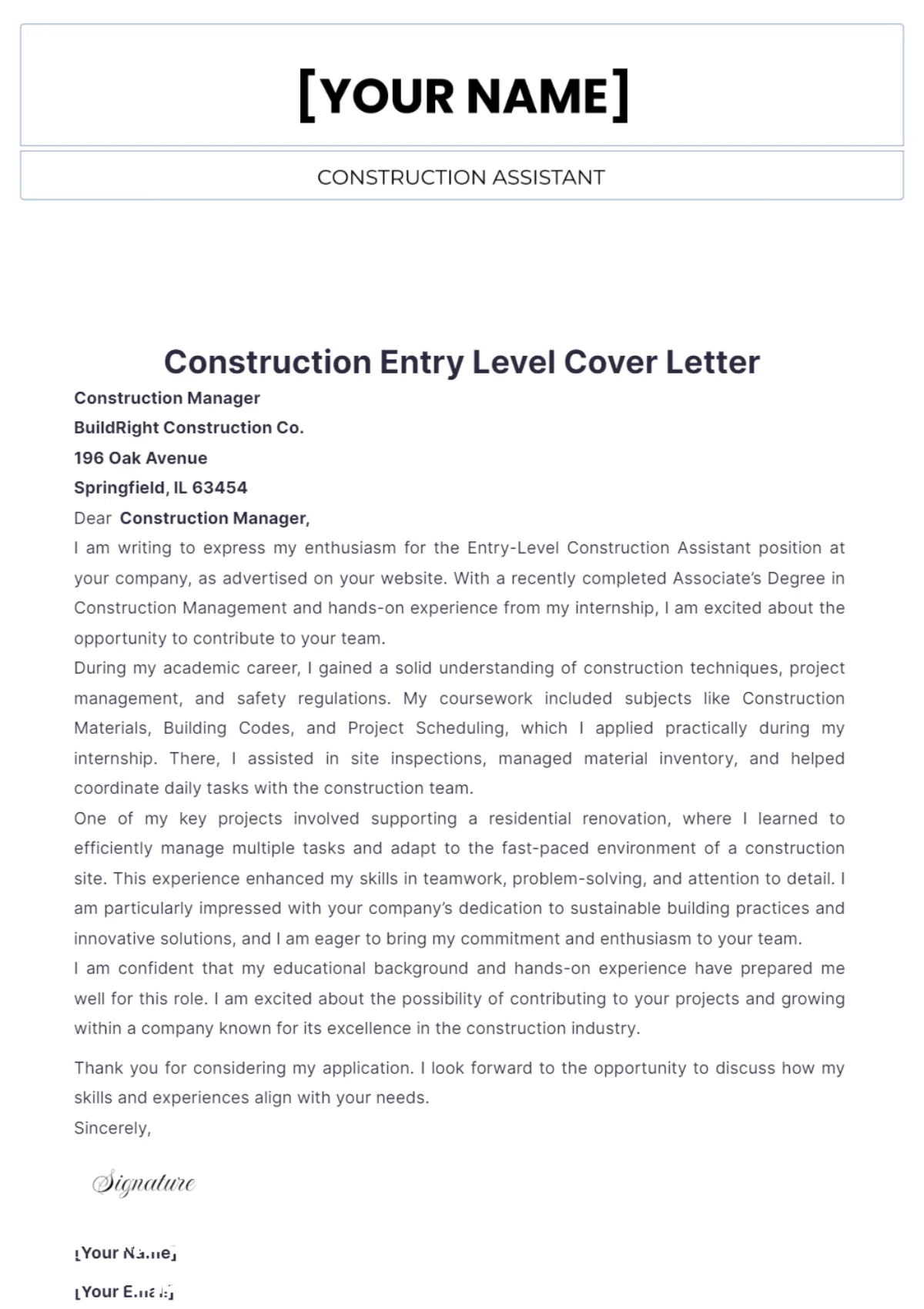
Avoid making common mistakes that can undermine your cover letter. These errors can diminish your chances of getting an interview. Being aware of these common pitfalls allows you to create a polished and professional cover letter that enhances your prospects. By avoiding these mistakes, you can present yourself in the best possible light.
Generic Language
Avoid using generic phrases and clichés that don’t provide any specific information about your qualifications or interest in the role. Generic statements are often disregarded by hiring managers. Instead, use specific examples, quantify your achievements, and tailor your letter to reflect the job requirements and company values. Be original, and let your personality shine through. Replace generic sentences like ‘I am a hard worker’ with specific examples demonstrating your work ethic, such as ‘During my internship, I consistently completed projects ahead of schedule.’
Typos and Grammatical Errors
Typos and grammatical errors can create a negative impression, making you appear careless or inattentive to detail. Always proofread your cover letter carefully, checking for spelling, punctuation, and grammatical errors. Use spell-check tools, but also read it aloud to catch any errors that might be missed. Have a friend or mentor review your cover letter for a second pair of eyes. A well-written cover letter demonstrates professionalism and attention to detail.
Lack of Specificity
Vague statements don’t provide hiring managers with enough information about your skills and experience. Instead of making general claims, provide concrete examples of your accomplishments and how your skills align with the job requirements. Quantify your achievements whenever possible and use action verbs to describe your duties and responsibilities. Make sure that you specify your role in past projects so the hiring manager understands the specifics.
Overly Long Cover Letters
Hiring managers have limited time to review applications, so keeping your cover letter concise is essential. Aim for a cover letter that is no more than one page long. Focus on the most relevant information and avoid going into unnecessary detail. Be clear, concise, and get to the point quickly. Focus your cover letter to highlighting your most relevant skills, work history, and any additional training in the field of construction.
